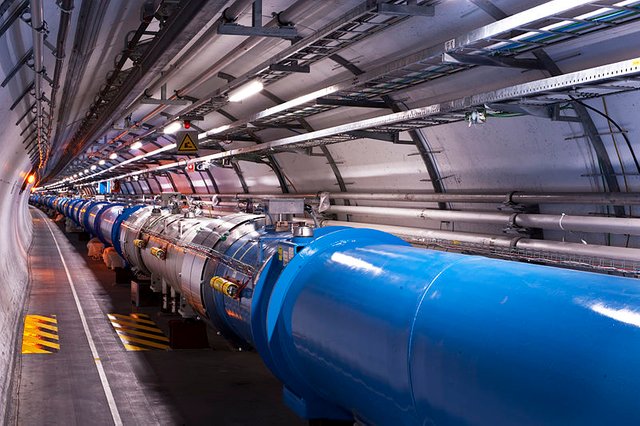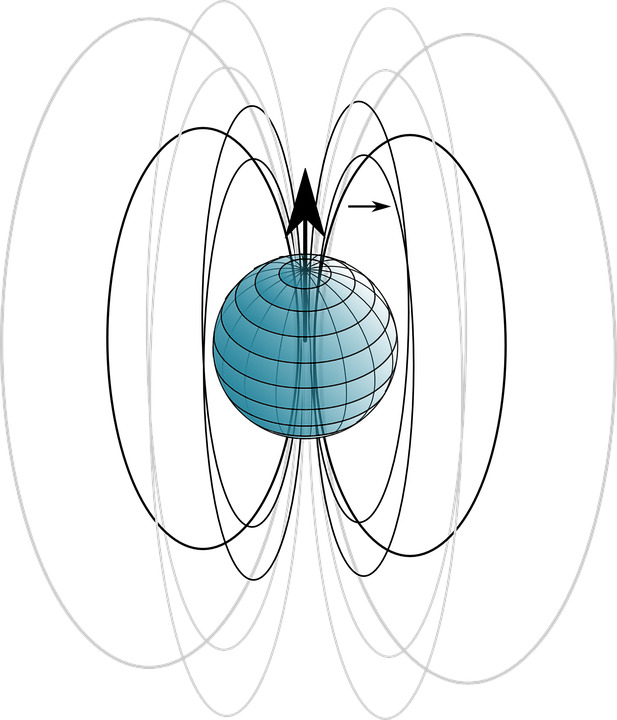Will it be possible to travel at the speed of light?
If something has fascinated us in science fiction movies about space, it is the ability to travel at the speed of light, and to go from one planet to another in an instant. But although in the movies it seems something very easy, as simple as changing speed in the car, in real life it is something extremely complicated, and even theoretically impossible.

Traveling at the speed of light is not as simple as the movies make us see it. Source: pixabay.com.
According to Albert Einstein and his famous theory of relativity, it seems that we are doomed to travel at speeds slower than light, and with his famous equation of the theory of special relativity E=mc2 he seems to warn us of this.
In the equation, E is the energy, m is the mass of an object and c is the speed of light, which in a vacuum is 299,792.458 kilometers per second, something like 1,080,000,000,000 kilometers per hour, a pretty impressive value isn't it?
This simple equation tells us that a body that has mass also has energy, and even if the object is very small, it has a lot of energy. But to understand the difficulty of traveling at the speed of light we must complete the expression as follows, E2 = (mc2)2 + (pc)2, which includes the term pc associated with the amount of motion. That is, the energy of an object is the sum of its rest energy and the amount of motion.
The above expression tells us that as we accelerate an object, the more energy we will need to continue accelerating it, since both components of the equation increase, so the closer we get to the speed of light the faster the mass of the object increases, when approaching the speed of light the mass tends to infinity so the energy must be infinitely large as well.
Therefore objects can only move at speeds lower than the speed of light, even more so if they have a lot of mass, making it almost impossible for a ship as large as the Millennium Falcon to cross space to reach Tatooine in a short time.
But, although large bodies cannot accelerate to the speed of light, the truth is that in the universe there are particles that can accelerate to surprisingly high speeds, even reaching 99% the speed of light. And the study of these particles is of great interest to modern science, not only because it is important to protect spacecraft from such particles, but also because they could provide knowledge that could lead to the development of new propulsion systems.
And in fact, there are ways to accelerate particles to near-light speeds, and the Phys.org portal presents three ways:
Electromagnetic fields
Electromagnetic fields can accelerate charged particles, pulling them in a similar way as gravity pulls objects with greater mass. Some of you may have heard of particle accelerators such as the Large Hadron Collider, a gigantic structure where, using electromagnetic fields, particles can be accelerated to speeds up to 99.999% the speed of light, and then made to collide and produce large amounts of energy and elementary particles like those that originated during the Big Bang.

View of a section of the Large Hadron Collider, supermagnets accelerate particles to incredibly high speeds. Source: Wikipedia.com.
Magnetic explosions
When magnetic fields collide with each other, they become entangled, and when the tension between them becomes too great, the magnetic field lines are broken and explosively realigned. This rapid shift to reconnect causes charged particles to travel at incredibly high speeds.
Scientists study this magnetic reconnection, suspecting that it is how the solar wind propels particles in space at near-light speeds, and hope to understand how particle acceleration around the Earth can occur.

In the space surrounding the Earth, invisible explosions are constantly occurring as a result of magnetic field lines breaking and realigning, shooting particles through space. Source: pixabay.com.
Wave-particle interactions
When electromagnetic waves collide their fields can be compressed, and the charged particles bouncing between the waves gain a lot of energy, like a kind of ball bouncing between two walls approaching each other.
This interaction between waves and particles is very common in near-Earth space and is responsible for accelerating particles to surprisingly high speeds, even damaging the electronics of satellites and spacecraft in space. It also originates in distant space and is thought to be the way to drive some cosmic rays originating from outside our solar system, it is also thought to be the way to drive the solar wind.

The solar wind is a stream of charged particles released from the Sun's upper atmosphere at high speed. Source: pxhere.com.
While the science of propelling large objects at near-light speeds through space still seems distant and only possible in science fiction, the reality is that waves and particles are propelled at this speed very frequently through space, and even on earth the way to accelerate these particles is being replicated to understand how they move, and to protect spacecraft and astronauts from their effects on electrical components and also, perhaps in the future, to develop propulsion systems that will allow spacecraft to be accelerated to incredibly high speeds.
Thanks for coming by to read friends, I hope you liked the information. See you next time.

Greetings @emiliomoron excellent scientific material that you share with us, focused on a flexible perspective that allows us to understand the physical principles that you expose there.
We must remember that in our evolutionary process we have achieved great things, hence I believe that with the new alternatives and new propulsion systems we are not far from achieving travel at amazing speeds.
I am fascinated by this type of content, thank you for such a valuable delivery, greetings.
Hey @emiliomoron
This post is very good to gain more knowledge about science. This is true that any object can't move faster than light. I did not know that our body also has mass energy but its an additional learning for me. Thanks for sharing this great post.
@tipu curate
Upvoted 👌 (Mana: 4/5) Get profit votes with @tipU :)
Hello @emiliomoron
Traveling at the speed of light, wow, I don't know if it's possible for any human to do that. Some time ago I read that rockets when they leave earth orbit can reach speeds up to 15kilometers per hour, due to the fact that there is no gravity. already that is a great speed but more than that, well, I don't know what it could originate in the human body.
I once watched a science fiction movie from way back, where a theory was proposed for a spaceship that travels at the speed of light. Though, I know the possibility is very bleak but in technology, anything is possible.
More so, there are particles that travel at a near speed of light as you said. I also once read about another hypothetical particle (the tachyon) that is believed to have a speed more than that of light.
Nice piece buddy. Thanks for sharing